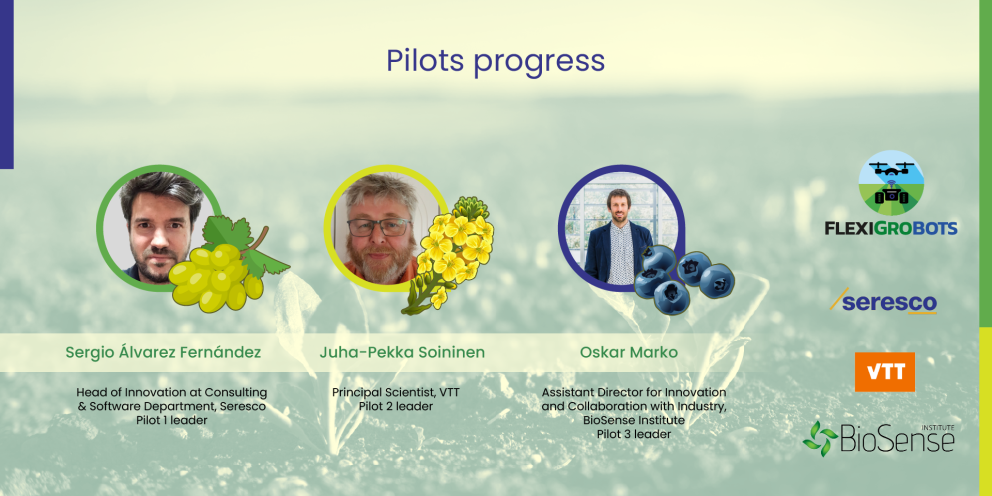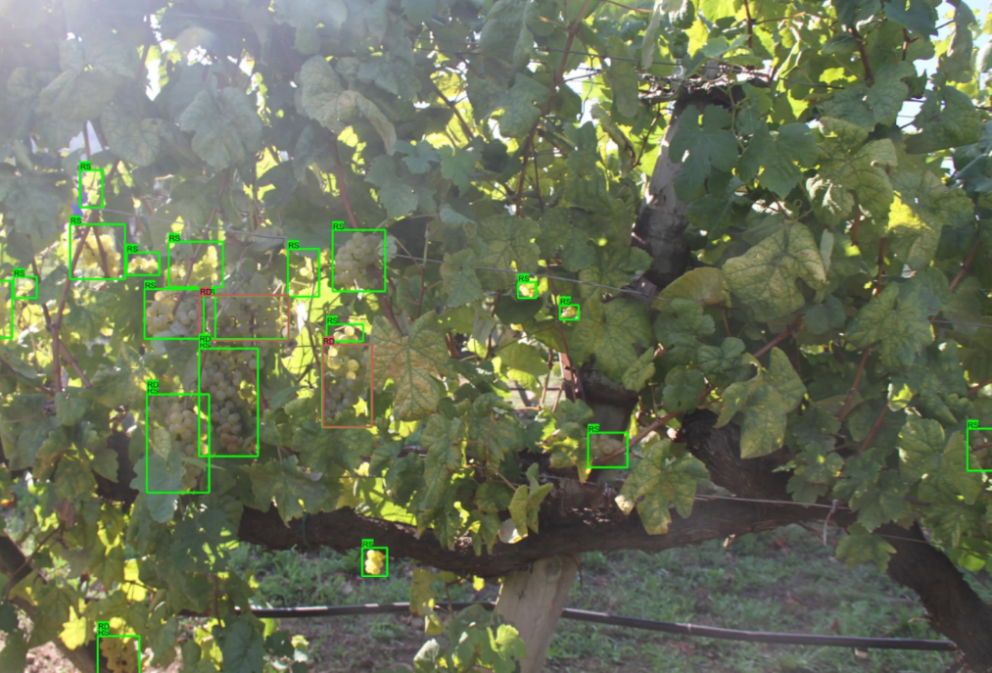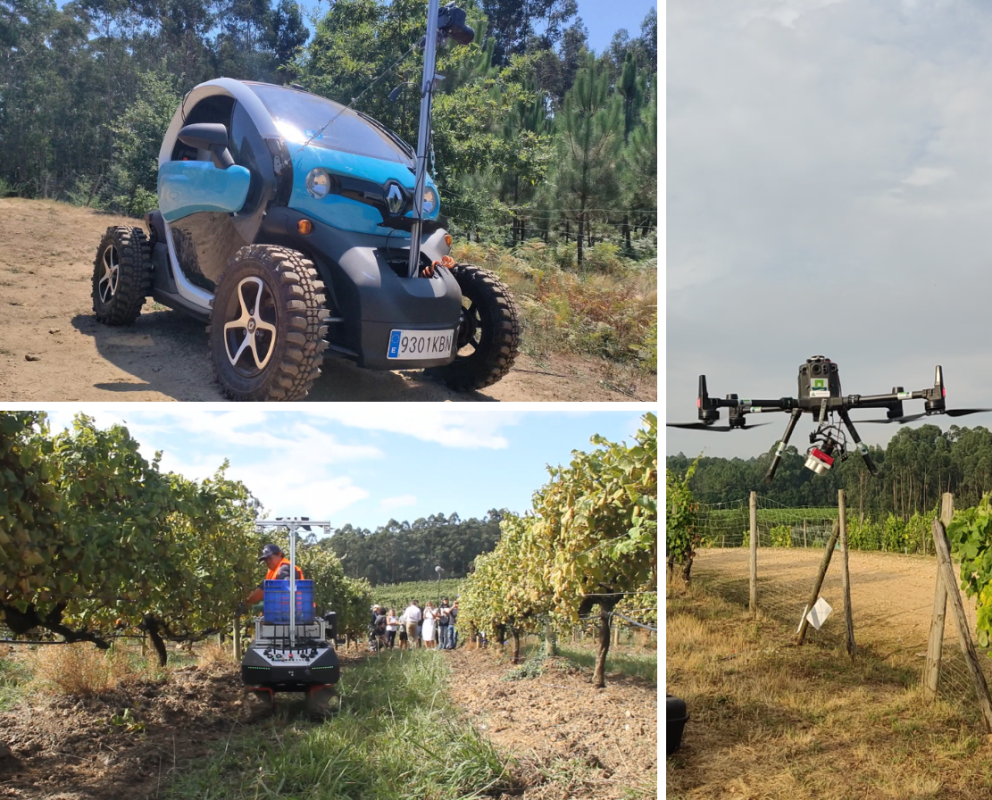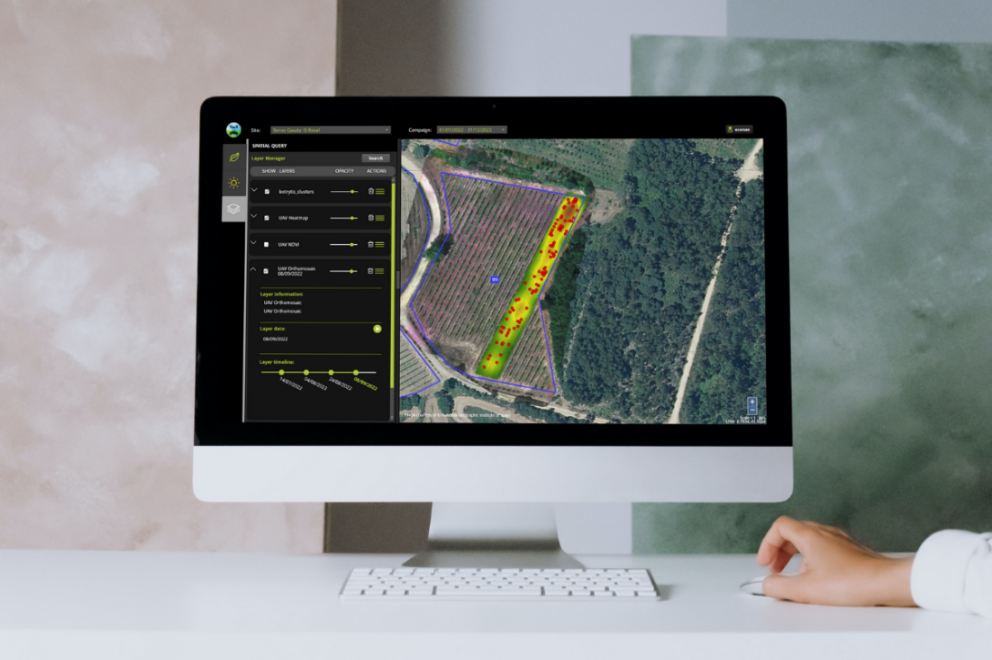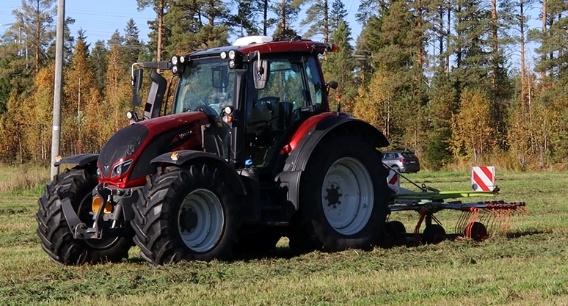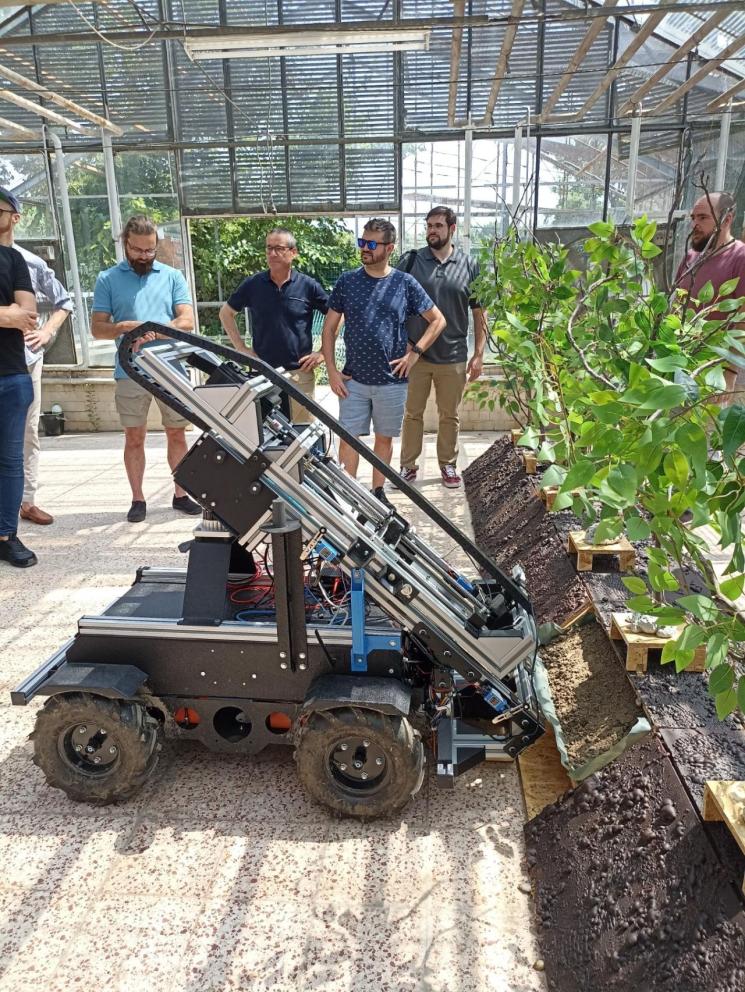Several field trials were carried out to test the botrytis early detection algorithm, using drone aerial imagery, an innovative method to generate heat maps using disease development factors based on risk assessment. The agility of the UGV platform supporting the grape harvest was also verified.
A Decision Support System (DSS) platform is being developed for the farmer, from which it is already possible to consult the meteorological data obtained from the sensors installed in the plots and see the status of the crop areas. In addition, this platform is integrated with the Open Geospatial Consortium (OGC) services offered by the FlexiGroBots Platform through an Open Data Cube, which allows the visualization of useful and valuable information obtained from the drones during the field tests in 2021 and 2022.
Pilot 2 - Rapeseeds
The rapeseed pilot has focused on developing technology components for its three use cases: Silage harvesting, pest management, and Rumex weeding. Silage timing service by Mtech has been tested during the whole growing season in 2022. The autonomous tractor by LUKE has done test drives on the pilot field with a wind rower implement.
An initial situation awareness service has been created by VTT. The field robot platform by Probot has been put together and tested on the field as well. The weeding arm and tool and Rumex posture detection service by VTT have been tested on lab conditions. The pest detection data sets have been collected with survey drones, and spraying drone equipment has been tested by LUKE.
We have also created the agriculture data space centric implementation architecture, where subcontractors and service providers will complement the capabilities of the farmer using FlexiGroBots Mission Control Centre and AI services in the realisation of the use cases. Basic concepts have been tested and are being further developed. The experiences so far make us confident that the project goals of creating multi-purpose flexible robots, data sharing, and advanced AI services for multi-robot field operations will be achieved.
Pilot 3 - Blueberries
This year was particularly dry and sunny, which caused severe problems with many crops, but luckily, the blueberry plantations professionally managed by Zeleni hit produced some of the sweetest berries they have ever seen.
The star of our pilot, our new kid, the robot nicknamed Gari, is growing very well. The soil analysis system has been mounted on the robot and an automatic orienting system now helps him find the right spot for the analysis. We designed a special proving ground within the university campus, so that all the elements can be tested thoroughly in the lab, before testing it on the field. It is true that kids these days spend too much time indoors, but this setup allowed us to execute many design-develop-test cycles, much more efficiently, thus speeding up the development.



